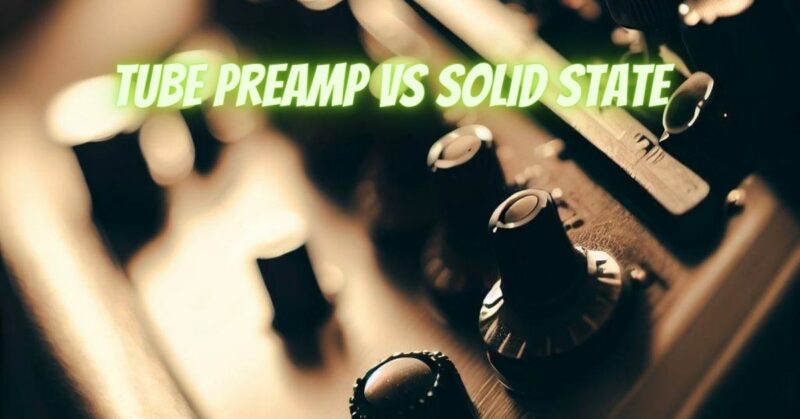Preamplifiers are essential components in audio systems, acting as the interface between source devices and power amplifiers. Two prominent options for preamplification are tube and solid-state designs. This article delves into the comparison between tube and solid-state preamplifiers, exploring their respective characteristics, sonic qualities, and considerations for selecting the best fit for your audio setup.
Tube Preamplifiers: Warmth and Harmonics
Tube preamplifiers, often referred to as valve preamps, employ vacuum tubes to amplify audio signals. They are known for their distinctive sound characterized by warmth, harmonically rich distortion, and a touch of vintage nostalgia.
Solid-State Preamplifiers: Precision and Accuracy
Solid-state preamplifiers, built using semiconductor components, prioritize precision and accuracy in signal amplification. They are designed to provide clean, transparent, and distortion-free amplification, aimed at preserving the original audio source with minimal coloration.
Sonic Characteristics
Tube Preamplifiers:
- Warmth: Tubes introduce harmonic distortion that adds warmth and character to the sound.
- Smoothness: Tube preamps tend to provide a smoother and more forgiving sound, particularly at higher volume levels.
- Natural Compression: Tubes exhibit natural compression when pushed to their limits, which can be musically pleasing.
Solid-State Preamplifiers:
- Accuracy: Solid-state preamps strive for accuracy and transparency, delivering a faithful representation of the source material.
- Clarity: Solid-state designs often offer better clarity and detail retrieval, especially in complex musical passages.
- Faster Transients: Solid-state preamps generally have faster transient response due to the absence of the inherent characteristics of tubes.
Considerations for Choosing
- Sound Preference: Your preference for a warmer, harmonically rich sound (tube) versus a clean, accurate sound (solid-state) will guide your choice.
- Audio Setup: Consider the rest of your audio chain. If you have other tube components, a tube preamp might complement the overall sound character.
- Genres and Applications: Tube preamps might excel with genres like jazz and classical, while solid-state preamps might be preferred for accurate reproduction in studio monitoring.
- Source Material: If you’re an audiophile who values preserving the nuances of high-resolution audio, a solid-state preamp could be a better choice.
Budget and Maintenance
- Tube Preamplifiers: Tube components can be more expensive upfront and might require occasional tube replacement, adding to long-term costs.
- Solid-State Preamplifiers: Solid-state designs often have lower maintenance costs and are generally more affordable.
Choosing between a tube and solid-state preamplifier hinges on your sonic preferences, audio setup, and intended applications. Tube preamplifiers offer warmth and harmonic richness, while solid-state preamplifiers prioritize accuracy and transparency. Carefully evaluate your listening goals and the overall synergy of your audio system to make an informed decision that complements your musical experience.


